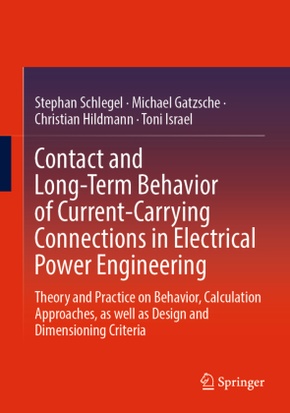Contact and Long-Term Behavior of Current-Carrying Connections in Electrical Power Engineering - Theory and Practice on Behavior, Calculation Approaches, as well as Design and Dimensioning Criteria
| Verlag | Springer |
| Auflage | 2024 |
| Seiten | 283 |
| Format | 17,5 x 1,8 x 25,0 cm |
| Gewicht | 795 g |
| Artikeltyp | Englisches Buch |
| ISBN-10 | 3662696436 |
| EAN | 9783662696439 |
| Bestell-Nr | 66269643A |
This book summarizes insights into stationary high-current connections across all voltage levels. These are applied in existing facilities and for new constructions in electrical power engineering, e-mobility, and battery storage technology. Current-carrying stationary connections are indispensable in countless applications. Complex systems often fail due to inadequate or heavily loaded connections. A large number of these connections are assembled and must function reliably over their required lifespan. To ensure this under current demands, correct conductor and coating materials must be chosen, robust design and construction ensured, proper installation guaranteed, and a secured temperature limit for the desired lifespan considering environmental conditions must be known. The book covers theories on contact physics, key conductor and coating materials, factors influencing electrical contact behavior, the relationship between mechanical and electrical contact behavior, aging physics, and long-term behavior under various operating and environmental conditions, along with design criteria for construction. Additionally, it presents approaches to numerically model electrical-mechanical-thermal behavior, introduces evaluation criteria, and outlines qualification testing methods. It serves as a comprehensive reference based on scientific research and practical insights from the past 40 years.
Inhaltsverzeichnis:
Introduction.- Types, function, and requirements of current-carrying connections.- Contact materials.- Contact behavior of current-carrying connections.- Electric-mechanical-thermal behavior of selected current-carrying connections.- Long-term behavior of current-carrying connections.- Design of current-carrying connections.- Testing procedures.

